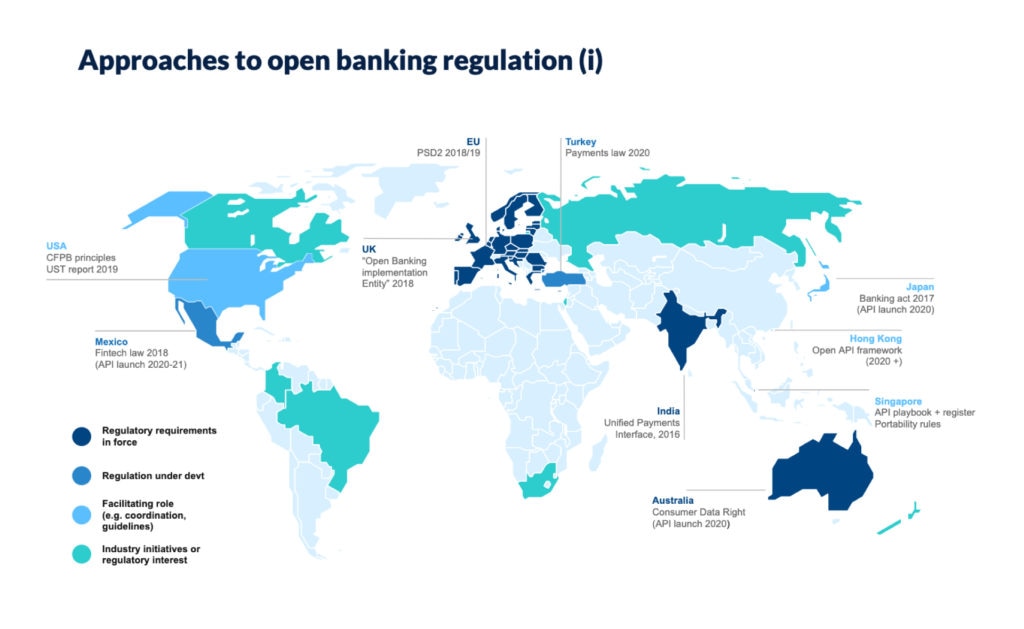
Unbreakable Chains: Government Policies Boosting Supply Chain Resilience Post-Pandemic
The world watched in real-time as the COVID-19 pandemic brought global supply chains to their knees. From empty shelves in supermarkets to critical shortages of medical supplies and semiconductor chips, the vulnerabilities of our interconnected world became painfully clear. This wasn’t just a business problem; it was a national security issue, an economic crisis, and a public health emergency all rolled into one.
But out of crisis comes innovation and a renewed focus. Governments worldwide, recognizing the profound impact of these disruptions, have stepped up their game. No longer content to leave supply chains solely to market forces, they are actively designing and implementing policies to make them stronger, more adaptable, and less prone to collapse in the face of future shocks.
This article will explore the critical government policies emerging post-pandemic, aimed at building robust supply chain resilience. We’ll break down the jargon and explain how these strategies are designed to protect economies, ensure access to essential goods, and create a more secure future for everyone.
What is Supply Chain Resilience, and Why Do Governments Care?
Before diving into policies, let’s clarify what we mean by Supply Chain Resilience. Imagine a chain made of many links, each representing a step in getting a product from its raw materials to your hands (e.g., sourcing, manufacturing, shipping, distribution, retail).
Supply Chain Resilience is the ability of this entire chain to:
- Anticipate: See potential problems coming.
- Absorb: Withstand minor shocks without breaking.
- Adapt: Quickly change routes or methods when disruptions hit.
- Recover: Bounce back efficiently after a major breakdown.
Traditionally, businesses focused on efficiency – making things as fast and cheap as possible. This often meant relying on single suppliers, just-in-time inventory (minimal stock on hand), and manufacturing in places with the lowest labor costs. While efficient, this approach proved incredibly fragile.
Governments care deeply about supply chain resilience because:
- National Security: Shortages of critical goods (like medicines, defense components, or energy) can pose direct threats to a nation’s safety and defense.
- Economic Stability: Disruptions can lead to inflation, job losses, and a slowdown in economic growth.
- Public Health: Access to essential medical supplies, food, and sanitation products is vital during crises.
- Social Cohesion: Empty shelves and unavailable goods can lead to public unrest and loss of confidence.
The pandemic was a loud wake-up call, demonstrating that supply chains are not just about business profits; they are about national well-being.
Key Government Policy Pillars for Supply Chain Resilience
Governments are deploying a multi-faceted approach, combining incentives, regulations, and international cooperation to build resilience. Here are the major policy pillars:
1. Diversification & Geographic Restructuring
One of the biggest lessons from the pandemic was the danger of "putting all your eggs in one basket." Many industries relied heavily on a single region or country for key components or manufacturing. Policies are now pushing for a wider spread.
- The Problem: Over-reliance on a single geographic region or supplier.
- The Goal: Reduce risk by spreading out sourcing and manufacturing.
Government Policies Include:
- Reshoring/Onshoring Incentives: Encouraging companies to bring manufacturing facilities back to their home country.
- How: Tax breaks, grants, subsidies, low-interest loans for companies that invest in domestic production, especially for critical goods (e.g., semiconductors, pharmaceuticals).
- Nearshoring Incentives: Promoting manufacturing in neighboring countries or regions.
- How: Special trade agreements, infrastructure development in nearby countries, joint economic zones. This leverages proximity for faster transport and easier oversight.
- Friendshoring/Allieshoring: Shifting supply chains to countries with stable political relationships and shared values.
- How: Prioritizing trade agreements and investment partnerships with trusted allies, creating secure supply chain blocs.
- Supply Chain Mapping Requirements: Mandating or incentivizing companies to map out their entire supply chain, identifying all suppliers (even tier 2, 3, etc.) and their locations. This helps pinpoint vulnerabilities.
2. Strategic Stockpiling & Reserves
Just-in-time inventory is efficient but leaves no room for error. Governments are now recognizing the need for "just-in-case" reserves for essential items.
- The Problem: Insufficient reserves of critical goods leading to immediate shortages during crises.
- The Goal: Maintain emergency reserves to bridge supply gaps during disruptions.
Government Policies Include:
- National Strategic Stockpiles: Creating and maintaining government-owned reserves of essential goods like medical equipment (PPE, ventilators), critical raw materials, energy, and even food.
- How: Direct funding, procurement, and management by government agencies (e.g., the U.S. Strategic National Stockpile).
- Incentives for Private Sector Stockpiling: Encouraging private companies to hold larger inventories of critical components or finished goods.
- How: Tax incentives, grants, or shared storage costs for companies that maintain higher-than-usual stock levels of designated critical items.
- Vulnerability Assessments: Regularly identifying which goods are most critical and where their supply chains are most fragile to determine what needs to be stockpiled.
3. Data Sharing, Transparency & Early Warning Systems
Information is power, especially in preventing and mitigating supply chain shocks. Lack of visibility across complex global networks was a major problem during the pandemic.
- The Problem: Lack of real-time visibility into supply chain disruptions, making it hard to respond quickly.
- The Goal: Improve information flow and early detection of risks.
Government Policies Include:
- Digital Platforms for Data Sharing: Developing secure platforms where companies can voluntarily or mandatorily share data on supply chain status, bottlenecks, or potential disruptions.
- How: Government-funded IT infrastructure, common data standards, legal frameworks for data privacy.
- Early Warning Systems: Using artificial intelligence (AI) and big data analytics to monitor global events (natural disasters, geopolitical tensions, health outbreaks) and predict potential impacts on supply chains.
- How: Funding research and development into predictive analytics, collaborating with private sector tech companies.
- Cybersecurity Standards: Implementing and enforcing robust cybersecurity standards across supply chain partners to protect sensitive data and prevent cyberattacks that could cripple logistics.
4. Investment in Domestic Manufacturing & R&D
To truly secure supply chains for critical goods, some countries are aiming to rebuild or bolster their own manufacturing capabilities.
- The Problem: Over-reliance on foreign manufacturing for essential goods and a decline in domestic production capacity.
- The Goal: Increase domestic production capability, especially for critical items, and foster innovation.
Government Policies Include:
- "Made in [Country]" Initiatives: Providing direct grants, subsidies, and tax credits for companies that build or expand manufacturing facilities within the country, particularly for strategic sectors (e.g., semiconductors, batteries, pharmaceuticals).
- Research & Development (R&D) Funding: Investing heavily in R&D for advanced manufacturing techniques, new materials, and disruptive technologies that can reduce reliance on foreign inputs or create more resilient production methods.
- How: Government grants to universities and private companies, establishing innovation hubs.
- Workforce Development: Investing in education and training programs to ensure a skilled workforce for advanced manufacturing and logistics roles.
- How: Apprenticeship programs, vocational training, STEM education promotion.
5. International Cooperation & Trade Agreements
While some policies focus on domestic strength, others acknowledge that many supply chains are inherently global and require international collaboration.
- The Problem: Uncoordinated responses and protectionist measures during crises can worsen global supply chain issues.
- The Goal: Foster collaboration among nations to ensure smooth global trade and joint crisis response.
Government Policies Include:
- Supply Chain Dialogues: Establishing regular high-level discussions and task forces with key trading partners to identify common vulnerabilities and coordinate responses.
- How: Bilateral and multilateral meetings, joint working groups.
- Trade Agreement Revisions: Incorporating supply chain resilience clauses into new and existing trade agreements, promoting diversified sourcing, and ensuring open trade routes during crises.
- How: Clauses that prevent export restrictions on critical goods, promote data sharing, or facilitate faster customs clearance.
- Standardization: Working with international bodies to establish common standards for logistics, data exchange, and product specifications to improve interoperability and reduce friction.
6. Digitalization & Technology Adoption
Leveraging cutting-edge technology is crucial for modern supply chain management.
- The Problem: Outdated systems and manual processes lead to inefficiencies and lack of visibility.
- The Goal: Use technology to make supply chains smarter, more efficient, and more responsive.
Government Policies Include:
- Funding for Digital Transformation: Providing financial incentives for businesses (especially small and medium-sized enterprises – SMEs) to adopt technologies like blockchain for traceability, AI for demand forecasting, and IoT (Internet of Things) for real-time tracking.
- How: Grants, subsidies, training programs.
- Smart Port & Logistics Infrastructure: Investing in modernizing ports, airports, and road/rail networks with digital tools to streamline customs, improve cargo handling, and optimize logistics.
- How: Public-private partnerships, infrastructure development funds.
Challenges and Considerations
While these policies are vital, implementing them isn’t without its complexities:
- Cost: Building resilience is expensive. Reshoring, stockpiling, and new infrastructure require significant financial investment, which can lead to higher prices for consumers.
- Efficiency vs. Resilience Trade-off: There’s a constant tension between building robust, redundant systems and maintaining cost-efficiency. Governments must find the right balance.
- Protectionism Concerns: Overly aggressive reshoring or friendshoring policies could lead to trade wars or economic nationalism, potentially harming global economic cooperation.
- Global Coordination: Many supply chains are truly global, and unilateral actions by one country may not be effective without broader international cooperation.
- Defining "Critical Goods": Deciding which goods are truly "critical" and warrant special government intervention can be a complex and politically charged process.
The Future of Supply Chain Resilience
The post-pandemic era has irrevocably changed how governments view supply chains. Resilience is no longer a niche business concern but a core component of national economic and security policy. The policies discussed above represent a fundamental shift towards a more proactive, strategic approach.
Moving forward, we can expect:
- Continued Investment: Governments will likely continue to pour resources into strengthening critical supply chains.
- Greater Public-Private Collaboration: Success will depend heavily on close partnerships between government agencies and private businesses.
- Integration with Sustainability: Resilience efforts will increasingly be tied to environmental sustainability, promoting greener logistics and ethical sourcing.
- Adaptive Strategies: As new threats emerge (e.g., climate change impacts, new pandemics), policies will need to remain flexible and adaptable.
The goal is not to eliminate all disruptions – that’s impossible. Instead, it’s about building supply chains that are strong enough to bend without breaking, and agile enough to recover quickly, ensuring that the essential goods and services we rely on remain available, even in the face of the unexpected. The pandemic was a harsh teacher, but its lessons are now being forged into policies designed for a more resilient future.



Post Comment